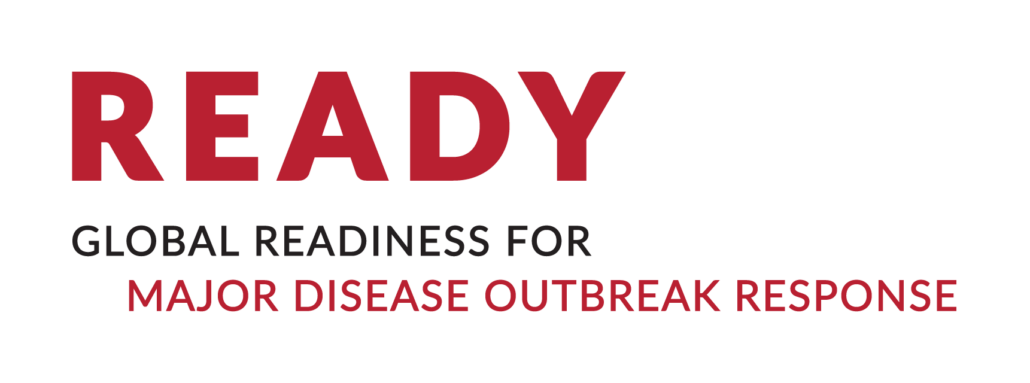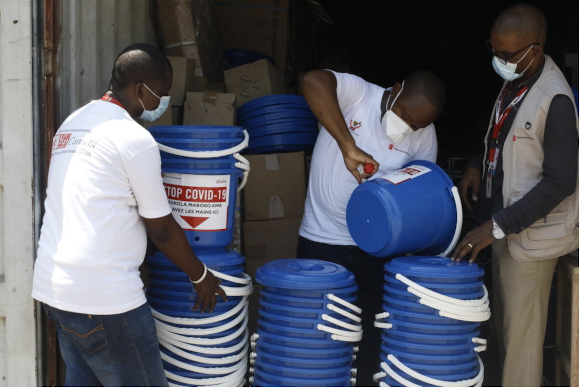Communicating with Communities in Epidemics & Pandemics:
Risk Communication and Community Engagement
RCCE Readiness Kit
What is the RCCE Readiness Kit?
The Communicating with Communities in Epidemics and Pandemics: Risk Communication and Community Engagement (RCCE) Readiness Kit (referred to as the RCCE Readiness Kit) aims to help non governmental organizations (NGOs) strengthen their disease outbreak preparedness to respond quickly and effectively to emerging epidemics and pandemics. While suitable for any NGO that responds to public health emergencies, most of the content and tools include special considerations for humanitarian actors working in complex settings. The RCCE Readiness Kit guides users through outbreak preparedness and response phases and readiness actions to help them better prepare and plan to use RCCE in an outbreak response. Recommended actions link to practical tools that support their implementation. These recommended actions are not prescriptive, but instead serve to prompt further thinking on local contexts, organizational capacity, coordination, and capabilities to respond to infectious disease outbreaks
Specifically, the RCCE Readiness Kit helps organizations to:
What is the RCCE Readiness Kit?
The Communicating with Communities in Epidemics and Pandemics: Risk Communication and Community Engagement (RCCE) Readiness Kit (hereinafter referred to as the RCCE Readiness Kit) aims to help non governmental organizations (NGOs) strengthen their disease outbreak preparedness to respond quickly and effectively to emerging epidemics and pandemics. While the kit is suitable for any NGO that responds to public health emergencies, most of the content and tools include special considerations for humanitarian actors working in complex settings. The RCCE Readiness Kit guides users through outbreak preparedness and response phases and readiness actions to help them better prepare and plan to use RCCE in an outbreak response. Recommended actions link to practical tools that support their implementation. These recommended actions are not prescriptive, but instead serve to prompt further thinking on local contexts, organizational capacity, coordination, and capabilities to respond to infectious disease outbreaks.
Specifically, the RCCE Readiness Kit helps organizations to:
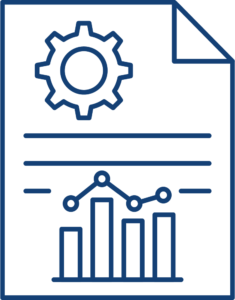
Integrate RCCE into emergency/outbreak preparedness and response plans
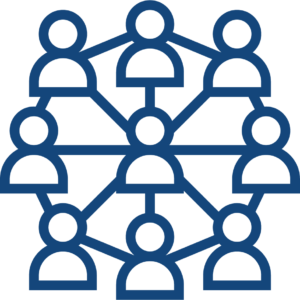
Engage communities across relevant response areas
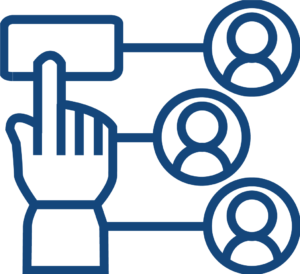
Plan human resources/staffing

Strengthen RCCE program quality through access to RCCE-related assessments, guidelines, and tools
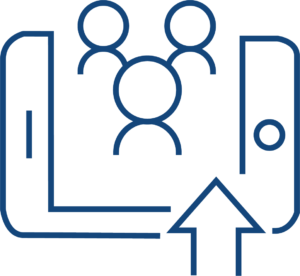
Coordinate RCCE activities

Monitor and evaluate RCCE interventions
Who should use this RCCE Readiness Kit?
The RCCE Readiness Kit is intended for NGOs and international non-governmental organizations (INGOs) that respond to public health emergencies, including those working in humanitarian settings. This may include: humanitarian directors; program, project, and operations leaders; emergency preparedness focal points; technical or sector advisers; and staff with communication and community engagement roles, including RCCE focal points and community engagement specialists.
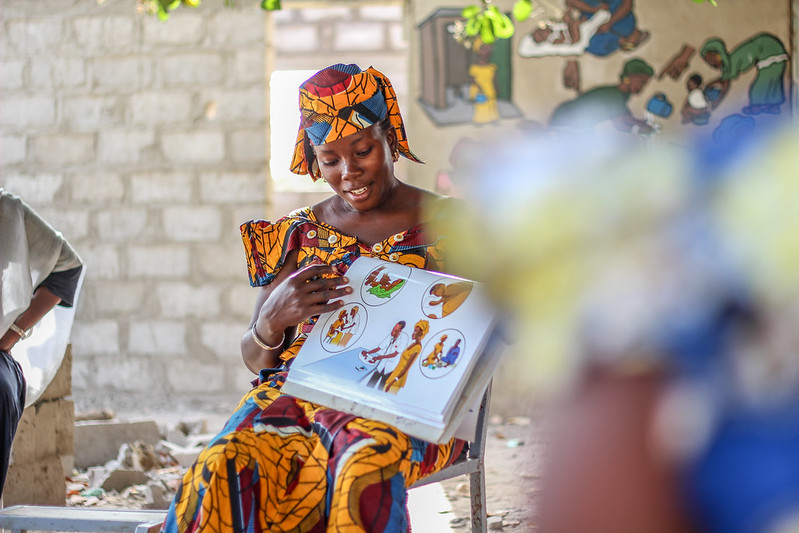

Who should use this RCCE Readiness Kit?
This kit is intended for NGOs and international non-governmental organizations (INGOs) that respond to public health emergencies, including those working in humanitarian settings. This may include: humanitarian directors; program, project, and operations leaders; emergency preparedness focal points; technical or sector advisers; and staff with communication and community engagement roles, including RCCE focal points and community engagement specialists.
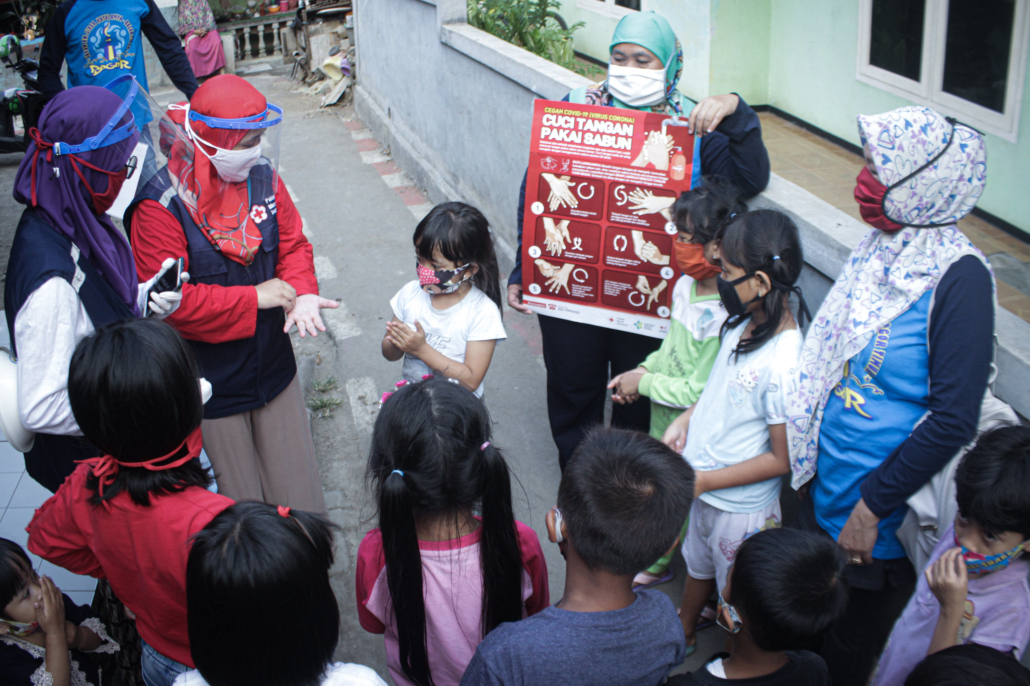
How to use the RCCE Readiness Kit
The RCCE Readiness Kit takes users through outbreak preparedness and response phases to improve preparations and plans for community engagement and related risk communication responses. The phases – pre-crisis, early onset, mitigation, suppression, and recovery – are plotted on an illustrative epidemic curve to show what RCCE responses may be needed as an outbreak peaks and then slows down. Although the trajectory of a disease will vary among outbreaks, the phases used here are based on patterns that have been established in public health responses, from recognizing the need for preparedness in the pre-crisis phase to containing the spread in the early onset phase, mitigating the progression of the outbreak through mobilization in the mitigation phase, adapting and maintaining momentum as the outbreak slows down in the suppression phase, and keeping the situation under control and building resilience in the recovery phase
Actions taken in the pre-crisis and onset phases prepare organizations to adapt to evolving information and changing community-level needs, behaviors, and perceptions. Through these phases, the RCCE Readiness Kit will help organizations to frame their actions for internal readiness and community responses in accordance with an outbreak’s typical epidemiological trends. Tools are provided in editable Word formats so organizations can adapt them to their specific organizational needs.

How to use the RCCE Readiness Kit?
The RCCE Readiness Kit takes users through outbreak preparedness and response phases to improve preparations and plans for community engagement and related risk communication responses. The phases – pre-crisis, early onset, mitigation, suppression, and recovery – are plotted on an illustrative epidemic curve to show what RCCE responses may be needed as an outbreak peaks and then slows down. Although the trajectory of a disease will vary among outbreaks, the phases used in this kit are based on patterns that have been established in public health responses, from recognizing the need for preparedness in the pre-crisis phase to containing the spread in the early onset phase, mitigating the progression of the outbreak through mobilization in the mitigation phase, adapting and maintaining momentum as the outbreak slows down in the suppression phase, and keeping the situation under control and building resilience in the recovery phase.
Actions taken in the pre-crisis and onset phases prepare organizations to adapt to evolving information and changing community-level needs, behaviors, and perceptions. Through these phases, this kit will help organizations to frame their actions for internal readiness and community responses in accordance with an outbreak’s typical epidemiological trends.
Orientation Materials: RCCE for Humanitarian Actors
We recommend reviewing these items before digging into the kit itself.
Introducing RCCE
In the simplest terms, risk communication and community engagement (RCCE) means involving communities to make outbreak communications as effective as possible.
Key Considerations
RCCE helps us understand the psychological, social, and environmental factors that explain why people behave the way they do. This helps agencies and humanitarian actors to respond more effectively.
Roles and Responsibilities
The RCCE Readiness Kit
The image below represents the progression of an outbreak response. Each phase of the response is described in a scenario, and has associated elements (emergency preparedness planning, staffing, training, messaging, etc.) For each element (shown in tabs on the left below), this kit offers suggested actions and tools to build readiness.
PRE-CRISIS
EARLY ONSET
MITIGATION
SUPPRESSION
RECOVERY
Pre-Crisis Scenario: Prepare for Inevitable Outbreaks
In the Pre-Crisis phase, there is no outbreak happening, but that doesn’t mean there is no outbreak preparedness work! Outbreaks will happen; they are inevitable. Nevertheless, some activities can be prepared for in advance. In the Pre-Crisis phase, readiness activities should support a rapid and effective RCCE response, should an epidemic or pandemic arise. Being ready to respond quickly to outbreaks means:
• Having plans, logistics, and information already in place
• Training staff in risk communication and community engagement
• Knowing who the necessary contacts are at the global, national, regional, and/or local levels, and building relationships with those contacts
• Having operational and technical tools that can be easily adapted to a specific outbreak occur
Pre-Crisis Scenario:
Prepare for inevitable outbreaks.
In the Pre-Crisis phase, there is no outbreak happening, but that doesn’t mean there is no outbreak preparedness work! Outbreaks will happen; they are inevitable. Nevertheless, some activities can be prepared for in advance. In the Pre-Crisis phase, readiness activities should support a rapid and effective RCCE response, should an epidemic or pandemic arise. Being ready to respond quickly to outbreaks means:
• Having plans, logistics, and information already in place
• Training staff in risk communication and community engagement
• Knowing who the necessary contacts are at the global, national, regional, and/or local levels, and building relationships with those contacts
• Having operational and technical tools that can be easily adapted to a specific outbreak occur
Readiness Elements
Emergency Preparedness Plans
Human Resources / Staffing
Training
Coordination
Communication / Messaging
Community Engagement
Knowledge Management
Monitoring & Evaluation
I. Actions to Take: RCCE in Emergency Preparedness & Response Plans
- Include infectious disease outbreaks and RCCE in Emergency Preparedness and Response Plans (EPRPs). Assign an RCCE focal person on the emergency response team.
- Invite the focal person, communication and community engagement partners and implementers to EPRP workshops, especially from marginalized and women's groups as they can inform on disparities and other considerations (e.g. input into the composition of response teams, considerations on safe isolation facilities).
- Develop a plan for adapting community engagement in the face of movement restrictions and lockdowns, which may include greater reliance on remote engagement (social media, mobile, etc.), local resources (e.g. health facilities, essential workers), and partnerships with other response workers.
- As part of the EPRP process, conduct a desk review and collect data from existing partners, government and other relevant sources to identify vulnerable and marginalized populations and risk factors. Understand preferred, trusted and available communication channels (e.g. radio, TV, mobile).
- Identify and establish a list of vendors/ partners needed for communication and community engagement (e.g. printers, media, translators, etc.).
- Identify existing national risk communication strategies.
- Budget for participatory community engagement and two-way communication activities and conduct resource mobilization for RCCE activities.
II. Tools to Adapt: RCCE in Emergency Preparedness & Response Plans
Use these links to access and download corresponding tools to use and adapt for your specific context.
- Tips for Strengthening RCCE in EPRPs
- Emergency Preparedness and Response Planning Spreadsheet
- RCCE Scenario for EPRPs
- RCCE Roles and Responsibilities
- Guidance for Business Continuity and Program Adaptation Planning
- Standard Operating Procedure (SOP) for Community Engagement During Public Health Emergencies
- Resources Bank for Remote and Safe In-Person Options
- RCCE Surveys and Feedback Tools Bank (Web-based) | Word version
- RCCE Budget Template
I. Actions to Take: Human Resources/Staffing
- Map and assess internal staff and partner capacity in RCCE across all sectors and identify needs for training.
- Ensure staff understand the organizational approach to RCCE and their individual and team roles and responsibilities for RCCE in job descriptions/terms of reference.
- Where feasible, have an RCCE or social and behavior change expert on staff and in surge rosters to provide technical support to implementation teams and for ongoing capacity support. Especially if experts don’t exist on certain response teams, train select staff members to be internal champions for RCCE to ensure integration of community engagement and related risk communication across relevant response areas.
- Include foundational information on operationalizing RCCE in the orientation package for staff. Provide all emergency response staff with a briefing on the basics of RCCE.
- Orient all program staff on referral pathways to services that may be needed in an outbreak response (e.g. protection services/gender-based violence, mental health and psychosocial support, etc.).
II. Tools to Adapt: Human Resources/Staffing
- RCCE Competencies: Individual Assessments
- READY RCCE Capacity Assessment
- Example NGO Mapping Tools for RCCE Activities
- RCCE Roles and Responsibilities
- Example Job Descriptions for RCCE Roles
- RCCE basics slide deck
- OpenWHO: Basics of RCCE (videos)
- Public Health Emergency Response Briefing Note Template
- Glossary of RCCE and Epidemiology Terms
I. Actions to Take: Training
- Develop and train staff on duty of care protocols for infectious disease outbreaks. Establish safety procedures for staff and community mobilizers.
- Develop an RCCE training plan for staff across sectors and train in RCCE for infectious diseases to build staff skills to increase readiness in RCCE across the response.
- Train health workers and community health workers on interpersonal communication to build skills and increase response readiness.
II. Tools to Adapt: Training
I. Actions to Take: Coordination
- Learn about what public health coordination mechanisms exist in-country in the event of a public health emergency and identify entry points and staff who will engage with them. For RCCE, typical entry points for these forums include the ministries of health, WHO, and UNICEF.
- Identify if an ongoing communication and community engagement working group exists for humanitarian response NGOs, or if a group is formed as part of the response (e.g. within the cluster system), and if so, identify a focal person to participate.
- Advocate for the technical working group/NGO partner forum to map national and local-level geographic coverage of NGOs working on community engagement.
II. Tools to Adapt: Coordination
I. Actions to Take: Communication / Messaging
- Maintain reference guides of diseases that rise to the level of epidemics/pandemics, with key behaviors that can be considered for messaging.
II. Tools to Adapt: Communication / Messaging
I. Actions to Take: Community Engagement
- Maintain community engagement SOPs for public health emergencies.
- Identify entry points to RCCE, starting with an understanding of the hierarchy of decision makers and gatekeepers from the district/provincial level to the community level: for example, government officials, formal/informal community leaders, religious leaders, community groups (e.g., women’s, youth, religious groups), and community platforms (health services, houses of worship) in the areas of operation.
- As part of this mapping, it’s important to understand which mechanisms and services already exist, and which are being used and by whom, to avoid establishing parallel systems.
- Maintain updated contact lists; include contacts for community groups (e.g., youth, women, religious) and representatives of marginalized populations (e.g., migrants, people with disabilities) who will need to be engaged.
- Conduct assessments in areas of operation to identify trusted and preferred communication channels, community norms, values, priorities, beliefs, cultures, languages, and current behaviors. These lived realities need to be integrated before, during and after an emergency to narrow gaps between responders and communities’ interpretation of a response.
- Develop/maintain community feedback mechanisms and rumor monitoring tools.
II. Tools to Adapt: Community Engagement
I. Action to Take: Knowledge Management
- Identify existing RCCE knowledge management (KM) platforms and establish and maintain a KM platform for staff that includes internal RCCE tools, guidance, and data.
II. Tool to Adapt: Knowledge Management
I. Action to Take: Monitoring & Evaluation
- Establish and maintain indicators for RCCE and include in M&E frameworks for responding to diseases with epidemic or pandemic potential.
II. Tool to Adapt: Monitoring & Evaluation
Early Onset Scenario: Emergency is Confirmed.
In the Early Onset phase, a new outbreak has occurred. Public health teams will immediately begin to track the disease, trace contacts, and inform the public on the outbreak and how to stay safe. However, there may be many unknowns about the infectious agent (e.g., bacteria, virus). Fear and anxiety may be high, and so might mistrust of authorities. Rumors may start to spread. Stigma and blame may take root as discussions focus on who started the outbreak and who is in close contact with them (e.g., health workers). Marginalized populations and particularly migrants tend to be targets of blame and rumors. These issues contribute to the adoption of unhealthy practices.
Being ready to respond in this phase means:
- • Understanding how to quickly and empathetically communicate about the disease, with simple, clear instructions about protective actions people can take.
- • Knowing how to conduct two-way conversations, explaining the response (like the importance of reporting cases and tracing contacts) and the knowns and unknowns of the disease and how to prevent infection.
- • Knowing how to use stigma-free language.
- • Being able to conduct rapid research to understand the knowledge, attitudes and behaviors related to the outbreak.
Early Onset Scenario: Emergency is Confirmed
In the Early Onset phase, a new outbreak has occurred. Public health teams will immediately begin to track the disease, trace contacts, and inform the public on the outbreak and how to stay safe. However, there may be many unknowns about the infectious agent (e.g., bacteria, virus). Fear and anxiety may be high, and so might mistrust of authorities. Rumors may start to spread. Stigma and blame may take root as discussions focus on who started the outbreak and who is in close contact with them (e.g., health workers). Marginalized populations and particularly migrants tend to be targets of blame and rumors. These issues contribute to the adoption of unhealthy practices.
Being ready to respond in this phase means:
- • Understanding how to quickly and empathetically communicate about the disease, with simple, clear instructions about protective actions people can take.
- • Knowing how to conduct two-way conversations, explaining the response (like the importance of reporting cases and tracing contacts) and the knowns and unknowns of the disease and how to prevent infection.
- • Knowing how to use stigma-free language.
- • Being able to conduct rapid research to understand the knowledge, attitudes and behaviors related to the outbreak.
Readiness Elements
Human Resources / Staffing
Training
Coordination
Assessment / Data Collection
RCCE Planning
Communication / Messaging
Community Engagement
Knowledge Management
Monitoring & Evaluation
I. Actions to Take: Human Resources/Staffing
- Identify existing projects/activities that will need to adapt to the public health emergency response (e.g. an existing nutrition project may need additional resources to include disease prevention and control). Coordinate with senior leadership on adapting activities for increased safety measures or a transition to remote engagement, depending on the context, and adapting roles/responsibilities across sectors to include RCCE.
- Identify staffing/partners and recruit any additional staff and volunteers at the local level needed for community engagement/outreach.
- Depending on the outbreak context and organizational resources, consider recruiting a social scientist (e.g., a local consultant) for social science research or identify and work with partners or coordination groups that are collecting and analyzing social science information.
II. Tools to Adapt: Human Resources/Staffing
I. Actions to Take: Training
- Provide new or refresher training to staff, partners, and volunteers on RCCE that include safety/safeguarding during this infectious disease outbreak, with a focus on specific messaging for the disease pathogen.
II. Tools to Adapt: Training
I. Actions to Take: Coordination
- Confirm the mechanisms that public health and humanitarian responders use to share epidemiological data, community feedback, social science, and communication and community engagement information.
- Ensure the RCCE focal person is assigned to participate in an inter-agency forum that coordinates communication and community engagement activities (RCCE TWG, CE TWG, NGO forum, etc.) and reports back to the internal response team.
II. Tools to Adapt: Coordination
I. Actions to Take: Assessment/Data Collection
- Determine remote or safe in-person options to collect data, including needs assessments, partly based on epidemiological context and duty of care measures.
- Assess and modify social listening mechanisms (community feedback, rumors, perceptions) and complaint mechanisms for the outbreak (as needed). Link with a coordination mechanism that is tracking and analyzing this information (e.g. RCCE TWG). These data will help to identify gaps between how the response is delivered and how communities interpret it.
- Adapt rapid assessments to the specific outbreak based on knowledge of communities from previous mappings and conduct assessments in the communities being served. Collect information to tailor responsiveness to people’s needs and lived realities: know their perceptions, values, priorities and beliefs regarding the outbreak, as well as how existing systems and services will interact with the response to humanitarian needs.
II. Tools to Adapt: Assessment/Data Collection
- M&E Planning Tool for RCCE (data collection section)
- Remote and Digital Data Collection During COVID-19
- Wash'EM and the COVID-19 response (see tips for remote data collection and training)
- RCCE Surveys and Feedback Tools Bank (Web-based) | Word version
- SOP for Community Engagement During Public Health Emergencies
- RCCE Planning Tool
I. Actions to Take: RCCE Planning
- Develop an RCCE action plan with costed activities and an M&E plan (make sure this is aligned with the national risk communication strategy). Ensure communication channels are accessible to people without digital skills, with lower literacy, who may not speak the dominant language or who do not have access to mobile phones, radio, television and other forms of communication. Consider a mix of verbal and non-verbal messages for people with low or no literacy.
- Be prepared to advocate to government authorities to ensure full access to information that enables free and informed decision-making.
- Consider gender implications across all audience segments.
II. Tools to Adapt: RCCE Planning
I. Actions to Take: Communication/Messaging
- Work with the government and partners to develop tailored messages and materials in the appropriate languages and formats for audience segments, which should be informed by an analysis of existing epidemiological data, community mapping and assessment data. Pre-test first-wave messages and materials.
- Based on the RCCE action plan, establish accessible two-way communication mechanisms. Interactive radio talk shows or other media platforms, community dialogues/focus group discussions and desk information points are examples of channels that can actively respond to questions and facilitate two-way conversation.
II. Tools to Adapt: Communication/Messaging
I. Actions to Take: Community Engagement
- Review community engagement processes and information collected during the pre-crisis phase and begin reaching out to different levels of leaders to orient them on the outbreak and community engagement process to gain buy-in and support for the planned activities (even if community engagement activities will just change focus or scope, this action needs to happen).
- Conduct mobilization and engagement based on RCCE Plan, assessments and risks analyzed involving communities and select appropriate communication and community engagement methods accordingly (e.g. remote technologies such as radio, speakers) in the event of movement restrictions. Assess safety for any in-person outreach and community engagement strategies, based in part on the epidemiological context and duty of care measures.
- Confirm and continue to identify formal/informal community leaders and groups to orient the community engagement partnership, especially people from marginalized populations, which could include migrants, indigenous leaders, youth and community health workers.
II. Tools to Adapt: Community Engagement
- SOP for Community Engagement During Public Health Emergencies
- Community Meetings in Epidemics and Pandemics: Planning Tool
- Staff Safeguarding Operational Checklist
- Resources Bank for Remote and Safe In-Person Options
- Emergency Preparedness and Response Planning Spreadsheet
- How to use Phone Trees
- Phone Tree for Community Leaders
I. Actions to Take: Knowledge Management
- Update internal knowledge management system to share data and resources for this outbreak, including RCCE.
- Establish an agile internal mechanism to monitor the outbreak and adjust program implementation to a changing safety situation.
I. Actions to Take: Monitoring & Evaluation
- Review and adapt RCCE indicators in M&E frameworks to align with the specific disease outbreak and orient staff on their monitoring and reporting.
II. Tools to Adapt: Monitoring & Evaluation
Mitigation Scenario: Emergency is Progressing with Rising Cases & Deaths; Teams are Fully Mobilized
More information becomes known about the outbreak, and public health measures are adapted accordingly. These measures may conflict with cultural, religious and social norms; there may be mistrust and rumors; and more people may be stigmatized (e.g. front-line workers, survivors, marginalized populations). Fear may be high among some, and yet others may not feel at risk of infection.
Humanitarian needs will increase as the outbreak and measures take a toll on people’s work, family, and social lives. Particularly in humanitarian settings, people may be unable to comply due to a lack of access to services and funds, crowded living spaces and other issues, or simply because they have other priorities.Ongoing community feedback, rumor tracking and analysis and use of social science data are essential to ensure response activities are accepted, aligned with people’s lived realities, and respond to their needs. Remote options for community engagement and other responses may need to be reconsidered for some affected communities. Messages and materials will need to be updated to reflect the latest science, community perceptions, public policies and any new therapeutic or immunization tools that may be available.
Communication with affected audiences needs to be timely, with two-way approaches that allow for addressing questions and concerns. A mix of preferred and trusted community engagement and communication channels should be used for saturation and impact, with consideration of how to reach the most vulnerable and hardest-to-reach groups.
Mitigation Scenario:
Emergency is Progressing with Rising Cases & Deaths; Teams are Fully Mobilized
More information becomes known about the outbreak, and public health measures are adapted accordingly. These measures may conflict with cultural, religious and social norms; there may be mistrust and rumors; and more populations may be blamed and stigmatized (e.g. health workers, responders, survivors, marginalized populations). This can fuel fear, non-adherence and even civil unrest.
Fear may be high among some, and yet others may not feel at risk of infection. Humanitarian needs will increase as the outbreak and measures take a toll on people’s work, family, and social lives. Particularly in humanitarian settings, people may be unable to comply due to a lack of access to services and funds, crowded living spaces and other issues, or simply because they have other priorities. Health systems may be overburdened. Vaccines and treatment may not be available right away, but responses must readjust when they are.
Ongoing community feedback, rumor tracking and analysis and use of social science data are essential to ensure response activities are accepted, aligned with people’s lived realities, and respond to their needs. Remote options for community engagement and other responses may need to be reconsidered for some affected communities, depending on the outbreak context and public health policies.
Messages and materials will need to be updated to reflect the latest science, community perceptions, public policies and any new therapeutic or immunization tools that may be available. Communication with affected audiences needs to be timely, with two-way approaches that allow for addressing questions and concerns. A mix of preferred and trusted community engagement and communication channels should be used for saturation and impact, with consideration of how to reach the most vulnerable and hardest-to-reach groups.
Readiness Elements
Human Resources / Staffing
Training
Coordination
Assessment / Data Collection
RCCE Planning
Communication / Messaging
Community Engagement
Monitoring & Evaluation
I. Actions to Take: Human Resources/Staffing
- Re-assess staffing needs and recruit additional partners/volunteers, if needed, to carry out outreach and engagement activities.
- With supervision, continue to assess staff RCCE capacity and build skills with mentorship/training (e.g. to address new issues such as stigma, rumors, conflict, depending on the context). If treatment and vaccines are available, train staff on promoting their uptake.
II. Tools to Adapt: Human Resources/Staffing
I. Actions to Take: Training
- Improve interpersonal communication training of health-care workers and other frontline workers to build awareness of the needs and cultural, religious and social perspectives of affected populations, especially marginalized groups. Include how to address rumors. Teach health-care workers about stigma-free language and the stigmatization of certain groups during the outbreak (e.g. migrants).
- Train trusted community outreach workers and community influencers (community health workers, youth groups, traditional and religious leaders) in messages and two-way communication, teach them about stigma-free language and the stigmatization of certain groups, and encourage community action to prevent or mitigate stigma (if this is a priority issue).
II. Tools to Adapt: Training
I. Actions to Take: Coordination
- Continue to participate in inter-agency forums that share information on the communication and community engagement response, including community-level data and best practices, (RCCE TWG, CE TWG, NGO forum, etc).
II. Tools to Adapt: Coordination
I. Actions to Take: Assessment/Data Collection
- Ramp up collection of community feedback, rumors, perceptions and other social science data and/or connect with coordination mechanisms for continued updates on this information.
- Assess the safety situation and scale up participatory community engagement either in person or remotely. Assess remote/digital platforms for a safe and participatory engagement process, depending on the situation. Update safety sections in Community Engagement SOP, if needed.
- Assess whether communication channels are resonating and try to ramp them up (while still continuing to explore other creative options). Continue to use a mix of communication channels that includes two-way communication and ensure vulnerable, marginalized and other hard to- reach populations are engaged.
II. Tools to Adapt: Assessment/Data Collection
I. Actions to Take: RCCE Planning
- Design RCCE approaches locally by involving affected communities, who often have the best knowledge about what works to drive uptake. Involving them directly in the design contributes to generating ownership and sustainability of the eventual interventions.
II. Tools to Adapt: RCCE Planning
I. Actions to Take: Communication/Messaging
- Use new data to inform adaptation to messages, materials and activities, Pre-test new messages and materials with community members and adapt based on results.
II. Tools to Adapt: Communication/Messaging
I. Actions to Take: Community Engagement
- Conduct community dialogues on the disease and prevention and control measures. With previously identified community groups, update information on barriers, enablers and behavioral factors, preferred and trusted communication channels, preferred languages, misinformation, and questions from communities. Work with communities to prioritize these issues. Identify local capacity and resources, and understand local priorities for action.
- Either led by community groups or in collaboration with them, validate trusted sources of information and influencers and scale up if needed. Develop rapid response plans, with rapid interventions and specific roles and timeframes for community members. For example, interventions might include community outreach for disease prevention in high-traffic areas or ensuring supplies of soap and clean water. Support communities to implement and monitor response plans.
- Based on the assessment of communication channels, work with the media to develop creative, entertaining and engaging communications that address people’s priorities and barriers, including marginalized groups. (Include affected and marginalized groups in the creation of programming and report on their experiences and how they have overcome barriers).
- Link with other sectors to address service needs and access barriers and ensure that referral systems are functional before referring to other services (e.g. mental health and psychosocial support, gender-based violence).
II. Tools to Adapt: Community Engagement
- SOP for Community Engagement During Public Health Emergencies
- Community Meetings in Epidemics and Pandemics: Planning Tool
- RCCE Surveys and Feedback Tools Bank (Web-based) | Word version
- Tool for identifying Issues and Root Causes in Community Meetings
- How to Develop a Community Response Plan
- RCCE Planning Tool
- How to Develop a Creative Brief
I. Actions to Take: Monitoring & Evaluation
- Continue collection, monitoring, and internal reporting for program adaptation and routine monitoring purposes and report to coordination groups and the government.
II. Tools to Adapt: Monitoring & Evaluation
Suppression Scenario: Emergency Begins to Ease; Progress Slows Down
Affected communities may experience confusion, complacency and fatigue with the response. A number of factors may cause cases to increase again, especially if authorities have relaxed public health measures or if there is widespread mistrust. If vaccines and treatment are available, some may be hesitant to accept them, including health workers. Communities may have more humanitarian needs due to socioeconomic disruptions and periods of hardship. Health systems may be overburdened again in some contexts if there are new waves. Mistrust and rumors may continue or even intensify, especially when or if new preventative tools and responses are introduced.
Targeted RCCE must be conducted to address complacency and fatigue with the outbreak, and to address issues as they arise. There may be a need to encourage people to seek care, not only when symptoms of the disease arise but also for essential services, which people may still worry about using or starting to use again. Community engagement should be community-led to address complex needs and include referrals to services that may be needed (e.g. protection). Continuing to respond to community feedback and rumors, and collecting new data on perceptions, is critical. Adaptation to this new information is essential.
Suppression
Emergency is progressing at a slower rate. Affected communities may experience confusion, complacency and fatigue with the response.
A number of factors may cause cases to increase again, especially if authorities have relaxed public health measures or if there is widespread mistrust. If vaccines and treatment become available, some may be hesitant to accept them, including health workers. Communities may have more humanitarian needs during this time, especially if socioeconomic disruptions are more keenly felt after a period of hardship. Health systems may be overburdened again in some contexts if there are new waves. Mistrust and rumors may continue or even intensify, especially when or if new preventative tools and responses are introduced.
Targeted RCCE must be conducted to address complacency and fatigue with the outbreak, and to potentially address vaccine acceptance (if vaccines are available). There may be a need to encourage people to seek care, not only when symptoms of the disease arise but also for essential services, which people may still worry about using or starting to use again. Community engagement should be community-led to address complex needs and include referrals to services that may be needed (e.g. protection). Continuing to respond to community feedback and rumors, and collecting new data on perceptions, is critical. Adaptation to this new information is essential.
Readiness Elements
Assessment / Data Collection
RCCE Planning
Communication / Messaging
Community Engagement
Training
Monitoring & Evaluation
I. Actions to Take: Assessment/Data Collection
- Adapt social listening mechanisms (e.g. community feedback and complains, rumor tracking, focus group discussions) to a changing outbreak reality, which may include issues around vaccines, modified public health measures or responses.
- Assess new social science perceptions and social listening data on the outbreak and participate in inter-agency forums (e.g. RCCE Working Groups) that are analyzing data to understand trends and help shape program adaptations.
II. Tools to Adapt: Assessment/Data Collection
I. Actions to Take: RCCE Planning
- Update the RCCE plan with new objectives and activities, particularly if new response tools are introduced (e.g. vaccines) and continue to adapt assessments, survey tools, and response activities to new information about the disease and the response to mitigate it. Assess new feedback and perceptions on the outbreaks and link with inter-agency forums (e.g. RCCE WGs) that are analyzing data to understand trends and use for program adaptations.
II. Tools to Adapt: RCCE Planning
I. Actions to Take: Communication/Messaging
- Tailor messaging, communication and community outreach activities to the new realities of communities regarding the outbreak and response. It may be necessary to combat complacency and fatigue or other barriers that arise. Emphasize that communities must stay vigilant, identifying and reporting new cases and maintaining newly adopted preventative and protective behavior. Understand levels of care-seeking and, if there is a decline, develop RCCE activities that focus on rebuilding trust between communities and services.
- Continue to work with the media on accurate reporting of the outbreak, especially if new tools are introduced (e.g. vaccines) and continue using two-way communication platforms to engage in dialogues about new information and barriers (e.g. pivoting dialogues to the risks of infection).
II. Tools to Adapt: Communication/Messaging
I. Actions to Take: Community Engagement
- Ensure data is fed back to communities and continue to implement or adapt community response plans. Continue to address access issues to services and supplies (e.g. water, sanitation and hygiene, health facilities, vaccines) in community action planning and community dialogues, and ensure that referral systems are functional before referring to other services (e.g. child protection).
- Continue to advocate to government authorities for data-driven and informed decision-making on policies and messages related to outbreaks.
II. Tools Adapt: Community Engagement
I. Actions to Take: Training
- Continue to provide training and recruit newer networks of community outreach workers and influencers (e.g. youth, religious and traditional leaders, specific representative groups) where needed, to address arising issues (e.g. vaccines, fatigue).
II. Tools to Adapt: Training
I. Actions to Take: Monitoring & Evaluation
- Continue monitoring program activities. Ensure data is fed back to communities for continued motivation and engagement.
II. Tools to Adapt: Monitoring & Evaluation
Recovery Scenario: Emergency is Under Control
Once a public health emergency subsides, communities must recover and rebuild. This may include rebuilding trust in health services.
During this phase, RCCE should help ensure affected communities remain vigilant until the outbreak is officially declared over. As communities recover and rebuild, RCCE might be needed to rebuild trust in health systems to support the reduction of additional mortality and morbidity from other health burdens. An evaluation of RCCE interventions can help identify critical lessons that can feed into further preparedness and response strategies.
Recovery
Emergency is under control and there are fewer cases and less transmission.
Once a public health emergency subsides, communities must recover and rebuild. This may include rebuilding trust in health services.
During this phase, RCCE should help ensure affected communities remain vigilant until the outbreak is officially declared over. As communities recover and rebuild, RCCE might be needed to rebuild trust in health systems to support the reduction of additional mortality and morbidity from other health burdens. An evaluation of RCCE interventions can help identify critical lessons that can feed into further preparedness and response strategies.
Readiness Elements
I. Actions to Take: RCCE Planning
- Tailor RCCE activities so people are aware they should stay vigilant until the outbreak has been officially declared over.
II. Tools to Adapt: RCCE Planning
I. Actions to Take: Assessment/Data Collection
- Continue to assess the impact of the disease and response on communities (e.g. low care-seeking due to lingering fear and mistrust.
II. Tools to Adapt: Assessment/Data Collection
I. Actions to Take: Community Engagement
- Work with communities and health services to address issues and build more resilient community health systems.
II. Tools to Adapt: Community Engagement
I. Actions to Take: Evaluation/Knowledge Management
- Identify development actors to share lessons learned, which should also be shared with communities served and other key stakeholders.
- Conduct an evaluation of the RCCE response
- Conduct after action reviews internally and with communities, if possible. Document lessons learned to strengthen the next response.
II. Tools to Adapt: Evaluation/Knowledge Management
Resources
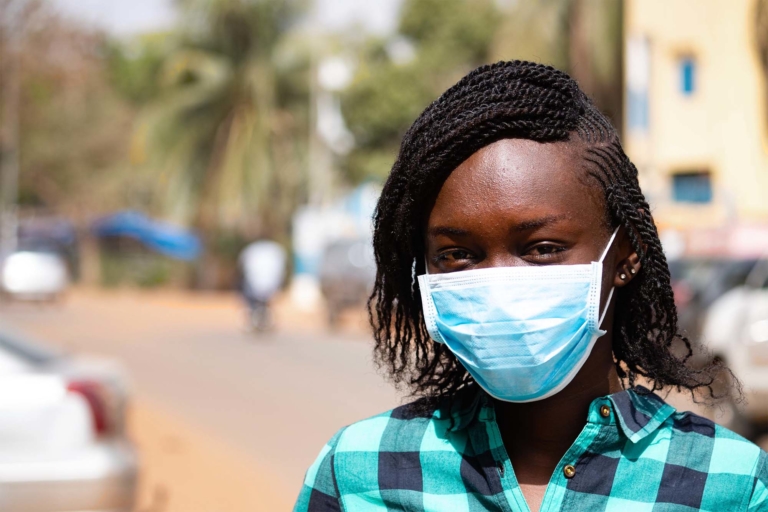
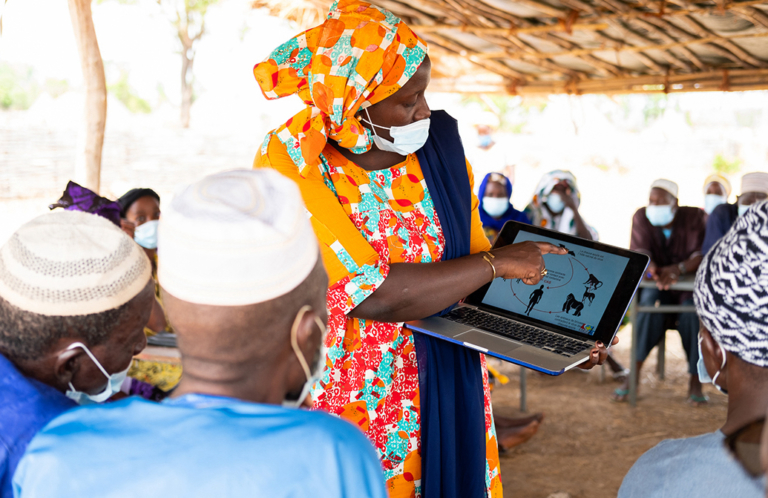
The Readiness Checklist is temporarily unavailable, as it is under revision. The updated version will appear here soon.

